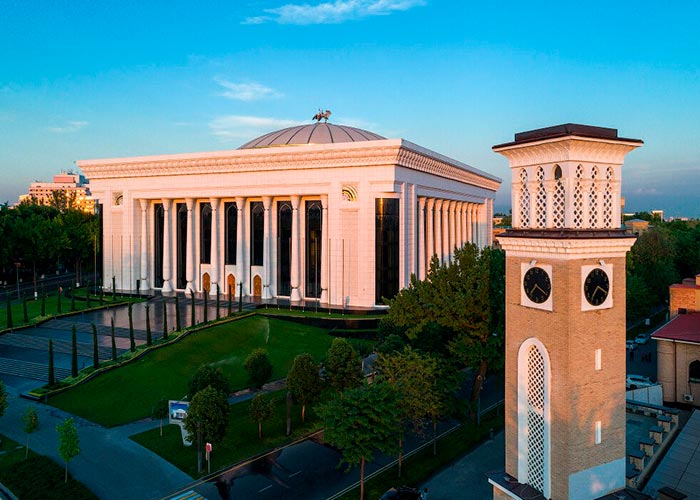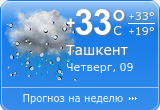


The State Museum of History of Uzbekistan
The history of Uzbekistan is closely connected with the history of The Great Silk Road. The State Museum of History of Uzbekistan in Tashkent was founded 136 years ago and it is one of the oldest museums in Central Asia.
The collection of exhibits, which is located in one of the largest museums of Tashkent, consists of 250 thousand items. This is including over 16,000 ethnographical, over 80,000 numismatic and 60,000 archaeological items.
The entire collection tells visitors about the formation of the Uzbek people and the establishment of statehood.
The collection of exhibits, which is located in one of the largest museums of Tashkent, consists of 250 thousand items. This is including over 16,000 ethnographical, over 80,000 numismatic and 60,000 archaeological items.
The entire collection tells visitors about the formation of the Uzbek people and the establishment of statehood.
The State Museum of History of Uzbekistan consists of 4 floors.
The first floor hosts an exhibition gallery. Today, this gallery is used for modern exhibitions.
The exhibits on the second floor tell the history of Uzbekistan from ancient times up to the Timurid era. Here you can see household items, mirrors, jewellery, and even first tools.
Numismatic collections of The State Museum of History of Uzbekistan are extremely valuable. They include money coined as far back as in 5th century BC to the 21st century. Coins of the Alexander the Great and Chingizids, Achaemenids are presented in the collection. Besides, there are coins of Samanids, Karakhanids, Chingizids.
There is the Greco-Bactrian drachma (3-2 centuries BC), coins of the Hellenistic Seleucid (3 c. BC), the Bukhara and Khorezm coins (1 century AD.) Sassanid and Chinese coins of the Tang Dynasty.
All these and many other findings testify to trade relations between west and east that faced on the caravan trails of the Great Silk Road.
The artefacts related to the Buddhist period the Uzbek history take a special place in the exposition. The “Triad” – an ancient statue of Buddha with two monks (1-4th centuries BC).
The third floor is occupied with exponents of the period of three khanates of Uzbekistan history when its territory was divided between the three biggest feudal states: Khiva, Kokand and Bukhara emirate.
The fourth-floor exhibition illustrates the newest history of the 19th-20th centuries. There are magazines and newspapers of Jadists, first theatre bills, films and photos; there is a collection of medals of Uzbek champions won at different times in kurash, wrestling and tennis.
By the way, there is a gift shop under the museum where you can buy items of Uzbek applied arts.
The first floor hosts an exhibition gallery. Today, this gallery is used for modern exhibitions.
The exhibits on the second floor tell the history of Uzbekistan from ancient times up to the Timurid era. Here you can see household items, mirrors, jewellery, and even first tools.
Numismatic collections of The State Museum of History of Uzbekistan are extremely valuable. They include money coined as far back as in 5th century BC to the 21st century. Coins of the Alexander the Great and Chingizids, Achaemenids are presented in the collection. Besides, there are coins of Samanids, Karakhanids, Chingizids.
There is the Greco-Bactrian drachma (3-2 centuries BC), coins of the Hellenistic Seleucid (3 c. BC), the Bukhara and Khorezm coins (1 century AD.) Sassanid and Chinese coins of the Tang Dynasty.
All these and many other findings testify to trade relations between west and east that faced on the caravan trails of the Great Silk Road.
The artefacts related to the Buddhist period the Uzbek history take a special place in the exposition. The “Triad” – an ancient statue of Buddha with two monks (1-4th centuries BC).
The third floor is occupied with exponents of the period of three khanates of Uzbekistan history when its territory was divided between the three biggest feudal states: Khiva, Kokand and Bukhara emirate.
The fourth-floor exhibition illustrates the newest history of the 19th-20th centuries. There are magazines and newspapers of Jadists, first theatre bills, films and photos; there is a collection of medals of Uzbek champions won at different times in kurash, wrestling and tennis.
By the way, there is a gift shop under the museum where you can buy items of Uzbek applied arts.


